Destinys rough edges are quite deliberate... and very smart game design
Hardcore fandom can be an odd thing at the best of times, but even by the jargon-sopped standards of DOTA or Pokemon, the enthusiasm for Bungie's Destiny is a little... uncanny. The game's flaws – a shortage of base content, a broken plot, and a dependence on RNG and stat-massaging for longevity – are in theory rather damning, but somehow, millions of Guardians have found themselves unable to let go. Nowadays, when I ask Year One veterans for the latest, they gaze at me with the seared, scooped-out expressions of people who left their souls in Baggage Reclaim after the return flight from Hell. “Got any Etheric Light, man? Please, I just need one more hit,” they'll confide, before flinching back because they've just spotted the reflection of Dinklebot in a passing car.
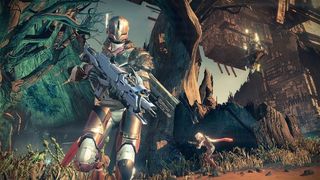
On paper, the launch of Destiny's Taken King expansion (and its accompanying free update) is a clearing of the waters. Most of the base game's major frustrations have been addressed. Additional maps, modes, a new Raid and the like aside, the expanded edition introduces straightforward XP-based levelling in place of the original's miserly and byzantine progression systems. It also overhauls Destiny's missions and environments in ways that make it feel a bit more like the fully fleshed-out, joined-up open world story we were promised before release.
You can now scan objects for narrative titbits, and initiate radio chats with NPCs at the Tower for added context. Old enemies have been taught new tricks, hopefully inching the line-up closer to the peerless blend of smarts and insanity that is Halo's Covenant. The storytelling has been pumped up, with Peter Dinklage yielding the mic to a sprightly Nolan North, and more in the way of cinematic bookends for missions (existing owners will be able to download much of the foregoing as a free update, and buy The Taken King's story content separately).
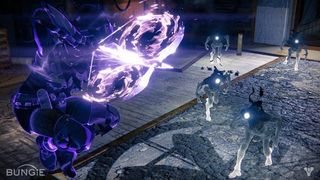
As somebody who was ultimately turned off by Destiny Year One's beautiful yet barren landscape, rickety narrative and elusiveness about upgrades, I'm looking forward to giving it another whirl. Other writers have gone further with their critiques, labelling the base game a glorified beta doled out for a premium and propped up by costly expansions. Which raises the obvious question: is The Taken King the game we should have got at launch? The answer may seem a firm “yes”, but there's more to Destiny's flaws - and how they resonate with all that preaching about ‘becoming legend’ and rescuing humanity's past - than meets the eye. An MMO with cleaner systems and a late-game that is less beholden to RNG might have won more critics round at release, but I'm not sure it would have commanded the same fascination over time.
Enduring design is increasingly a question of having the right mystique, for want of a more precise term. An assortment of trends - the shift towards free-to-play, the pressure to sell add-on content, and the need to stave off piracy by locking people into publisher-supervised content networks - have created a situation where holding a buyer's interest for months is paramount. Per the internet's evolution at large, games are also increasingly and bizarrely valued for the conversations they generate, rather than whether they're any fun: subreddits choc-a-bloc with rumours about scrapped content on-disc, arguments on YouTube about a game writer's politics, gifs of amusing glitches that do the rounds on social media.

It's an environment in which flaws, or a studied degree of obtuseness, can be strengths. As a Destiny detractor, you may not know how satisfying it is to plant a fully tricked-out Vortex grenade in a chokepoint. But I'm betting you've stumbled on Dinklage's career-making phrase “that wizard came from the moon”, or heard about loot caves, or the frustrations of Engram decryption. Fame is preferable to infamy in theory but, given how much people enjoy being negative on the internet, infamy may last much longer.
It's common for Destiny veterans to lament the weirdly broken-up weapon and armour-maxing procedures, but hurdling those arbitrarily imposed difficulties – whether by doing it the ‘honest’ way, or cheesing the hell out of a boss – is one of the game's fundamental draws. This isn't just the thrill of beating a set of systems or the AI. It's about getting one over designers who you come to think of as the true villains of the piece, wallowing in their own crapulence behind the curtains.
Sign up to the 12DOVE Newsletter
Weekly digests, tales from the communities you love, and more
The sense that you're at war with a creator isn't wholly original to Destiny, but it permeates the game in a way I've never experienced in any other. I recall being stupidly outraged, for example, at the invisible walls that surround the tops of some pillars on Venus, cheating you of a place to snipe in safety. The sheer spitefulness of this is all in my head, most likely - only a fool would set out to annoy a player in this way - but judged as a whole, there's something very convenient about Destiny's abrasiveness, and how gripping that abrasiveness can seem.
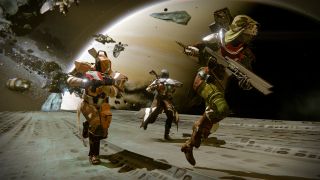
More concretely, the game's timed Strikes are notable for how they reject what is supposedly a founding principle of the networked app, the need to fit in around the player's other commitments. In Destiny you're required to meet Bungie's deadline, or else miss out on bespoke challenges and the possibility of rare loot. Forcing players together in this way stokes aggravation, but it also forges partnerships. You're more likely to play again with the same people in the same straits, after all, once you've committed to the bothersome process of teaming up with them in the first place.
I'm conscious, as with much Destiny criticism, that many of the foregoing observations won't seem especially outlandish to an old-time MMO player. Artificial-feeling checks on character growth, shared dungeon jaunts that are a headache to organise... none of this is mad science to a seasoned explorer of Azeroth. But Destiny's supporting fiction is among the few to create an appropriate context and sensibility for the often-maddening hang-ups and omissions of its base design, a point that extends to the stately way Bungie has gone about correcting the problems.
Complaints about the story's paucity perhaps forget that the developer began telling Destiny's story around half a decade ago, drip-feeding the internet a confused haul of faux-scripture, wistful concept art, iconography for as-yet-unexplained factions, and weapon names that evoke Twitter memes in being abstruse yet catchy. The idea was to seed a cultural phenomenon years in advance, and the thing about artworks that become cultural phenomena is that we expect them not to add up, to defy comprehension or conventional standards of elegance. It's a mark of their spontaneity.

In literal terms, the story of latter-day humans salvaging the riches of a once-great empire lends itself to a game that's awash with rough edges. Who knows, maybe you'll come across that rumoured original draft of Destiny's script while you're down there. And the idea of 'becoming legend', trumpeted so extravagantly in Activision's marketing materials, is a conspicuously neat fit for a modern-day video game project that needs to evolve post-launch, nearing its perfect manifestation bit by bit, and reaping a storm of headlines and discussion with every update the creators release.
Perhaps I'm reading too much into things. The proof of that could be how Destiny fares once The Taken King goes on sale. The initial reaction will be another feeding frenzy, but in the long run, it's possible that the softening of the Year One game's architecture will put off old players, people who've come to enjoy their mastery of this cruel and esoteric terrain. The flipside of this argument is that returning Guardians will appreciate the smoother ride all the more for having to subsist without it. Either way, I'm afraid you can expect a lot more talking.
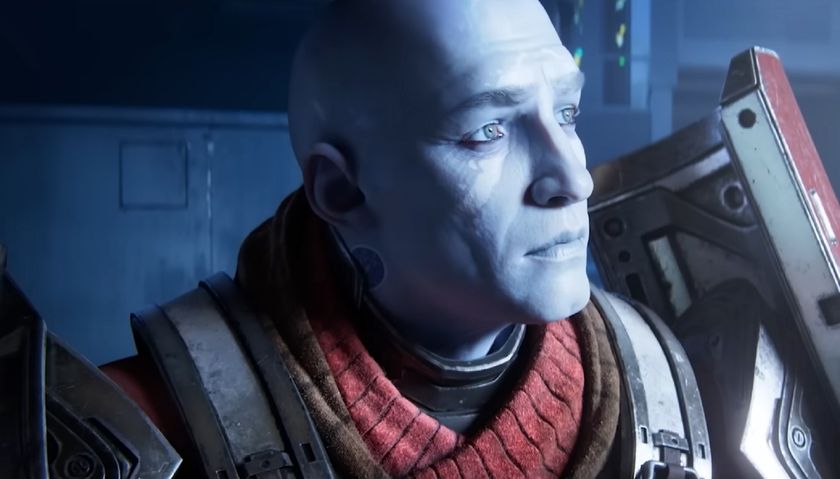
When Destiny 2 "weekly active users dropped lower and faster than we'd seen since 2018," Bungie assembled an A-Team to put out some fires: "We needed to do something"
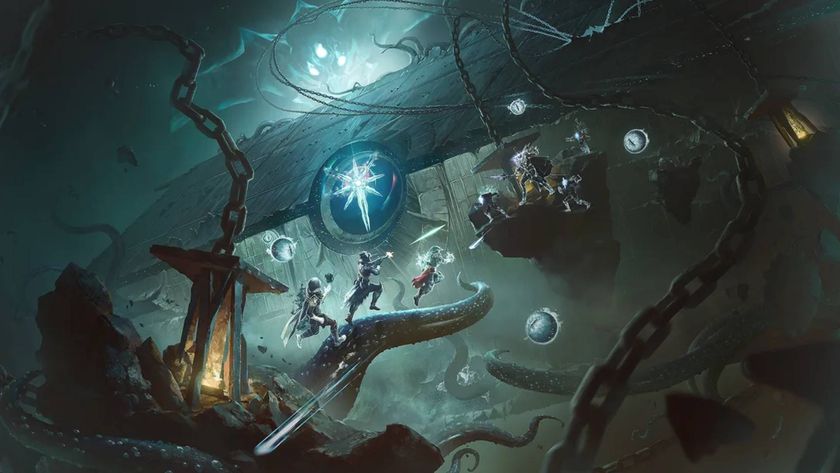
"A fun example of a bug becoming a feature": Destiny 2 accidentally made Exotic Glaives free to all classes, and Bungie says "we're going to let this ride"











